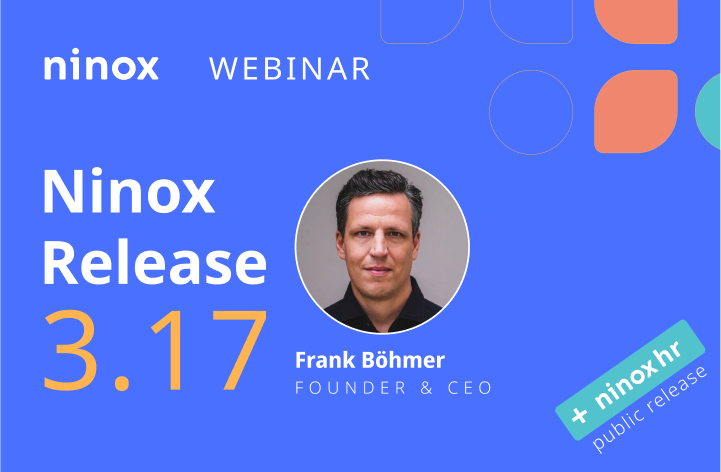Gartner forecast: Use of low-code technologies continues to boom.

Low-code is no longer a niche phenomenon — it is the future of software development. Companies are under pressure to digitize processes faster and implement automation solutions. But the shortage of IT professionals makes it difficult to keep pace with traditional development approaches. This is exactly where low-code comes in: With visual editors and prefabricated building blocks, even non-programmers can create powerful applications.
Gartner confirms the ongoing trend: The market for low-code technologies is growing rapidly, and the number of users outside IT departments is constantly increasing. But which factors are driving this growth? And which low-code technologies are prevailing? Let's take a look at the latest Gartner forecasts.
The most important facts at a glance
- Digitalization and automation pressure drive low-code adoption
- Companies benefit from greater flexibility and reduce development costs
- Gartner market forecast: The number of low-code users continues to grow: 80% expected in 2026.
- By 2024, 65% of all companies are developing with low-code platforms.
Low-code technologies continue to gain ground
More and more companies are turning to low-code as it enables the creation of more flexible software solutions. This is now confirmed by leading market analysts: According to Gartner, there are more and more Business users with no technical background, which rely on low-code platforms (LCAP) to develop new features and applications. Thanks to ready-made software components and visual design elements, you can take development into your own hands. Gartner predicts that the proportion of users of low-code applications who are not in IT departments will grow from 60% in 2021 to 80% in 2026.

Varsha Mehta, senior market research specialist at Gartner, says: “Low-code technologies enable companies to achieve the level of digital literacy required for the modern, agile environment. ”
The study published by KPMG in 2024”Low-Code Adoption as a Driver of Digital Transformation“ underlines the change in thinking among management levels. 81% of the companies surveyed now regard low-code as an integral part of their strategic orientation.
Gartner distinguishes low-code technologies
The term “low-code” is often used as a collective term for a range of tools that deal with creating business applications without programming. However, Gartner differentiates into different categories in its forecast:
- Low-Code Application Platforms (LCAP)
- Business Process Automation (BPA)
- Multi-Experience Development Platforms (MDXP)
- Robotic Process Automation (RPA)
- Integration Platform as a Service (iPaaS)
- Citizen Automation and Development Platforms (CADP)
- Other Low-Code Development (LCD) Technologies
LCAPs are growing the fastest, at a significant distance from all others. According to Gartner, LCAP providers achieved sales of almost ten billion dollars in 2023 — a quarter more than in 2022, meaning that the market is growing significantly faster than many other areas of technology. Gartner predicts that this trend will continue as more and more companies rely on low-code to speed up development processes and reduce costs.

Platforms that integrate automation options such as Robotic Process Automation (RPA) and Business Process Automation (BPA) in addition to classic low-code functions are particularly in demand. Companies are increasingly expecting solutions that not only facilitate development, but also increase efficiency in existing workflows. Citizen Automation and Development Platforms (CADP), on the other hand, have the lowest growth.
Reasons for the low-code boom
Gartner assumes that by 2026, around three-quarters of all new applications are built using low-code technologies. The reasons: automation pressure and staff shortages. Companies must continuously optimize and automate their processes to remain competitive, but they are unable to find enough skilled workers.
And this is despite the fact that the number of IT employees is constantly growing. According to Statista, they worked 2023 19,600 persons in software development. By the end of 2025, there should be 1.2 million employees. Nevertheless, the number of vacant positions for IT professionals in Germany remains high. In 2020, 70% of all companies identified a shortage of IT personnel. Around 86,000 open positions remained vacant.
“The high costs for technical professionals and an increasingly distributed workforce will contribute to greater adoption of low-code technologies,” says Jason Wong, Distinguished VP Analyst at Gartner.
Low-code platforms make it possible to react quickly and cost-effectively to digitization. Companies do not have to acquire expensive programmers, but can develop highly functional tools for their business processes with the help of citizen developers from their own ranks. The time-to-market can be significantly reduced with low-code platforms, but the individuality of the applications does not suffer as a result.

With Ninox, you're ready for the low-code boom
At Ninox, we see every day that our customers use our Ninox low-code platform to quickly build their own custom, flexible applications. The benefits of low-code technologies are obvious: Low-code development is faster and significantly less expensive as development using traditional programming (up to 10 times faster, according to Forrester).
Another major advantage of Ninox is the ready-made templates. With just one click, you have implemented a full-fledged CRM, ERP or HR software. However, the framework is not set in stone, but can be adapted to your individual needs.
Wong is talking about the so-called “composable enterprise” — i.e. a composable company. Thanks to low-code applications, organizations no longer have to squeeze their specific requirements into 0815 software.

Instead, they can flexibly combine modules and map processes precisely. This enables a high level of agility when business requirements change. Thanks to Ninox's intuitive drag-and-drop interface, adjustments can be implemented even without in-depth programming knowledge. This saves you time and resources while your software solution always grows with your business
Conclusion: Low-code remains the key to digital transformation
The figures speak for themselves: Low-code technologies are on the rise and will play an increasingly important role in software development in the coming years. The shortage of skilled workers, increasing automation requirements and the need to react flexibly to market changes are driving this development. Companies that rely on low-code early on benefit from faster development cycles, lower costs and greater adaptability.
With platforms like Ninox, you can take full advantage of this technology and drive your digital transformation forward in a targeted manner.















